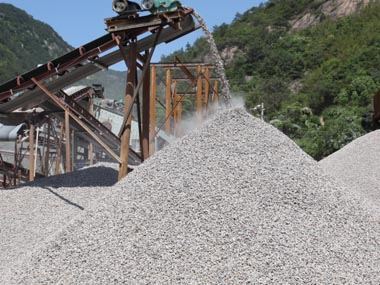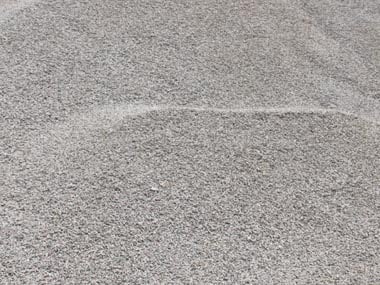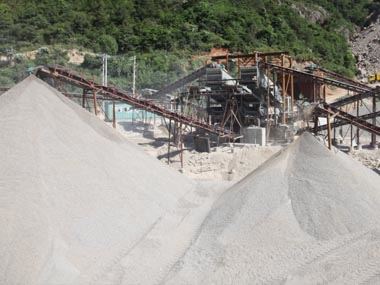Recent years, with the continuous increase in environmental protection rectification, the traditional extensive sand and gravel enterprises have stopped and rectified one after another, facing transformation and upgrading, and the production capacity of natural sand and gravel has also dropped sharply. As an important building material and concrete raw material, sand and gravel are widely used in housing and road engineering construction, and the market demand is huge. The manufactured sand, which is made by crushing and grinding, is gradually becoming a substitute for natural sand and gravel, and the application of manufactured sand has become a universal trend in the world. Compared with various natural sand and gravel materials such as river sand, sea sand and mountain sand, where are the advantages of manufactured sand? And what are the differences between them?



Natural sand: Rock particles with a particle size of less than 5mm, formed by natural conditions (mainly rock weathering), are called natural sand.
Manufactured sand: Rocks, mine tailings or industrial waste particles with a particle size of less than 4.7mm, which are made by mechanical crushing and screening after soil removal treatment, but excluding soft and weathered particles, are called manufactured sand.
There are 6 differences between manufactured sand and natural sand:
The manufactured sand is the sand and gravel material obtained after crushing by suitable crushers and other professional sand making machine. Compared with natural river sand, it has the characteristics of sharp edges and sharp corners and more needle-like pieces.
Distinguish manufactured sand and natural river sand from the appearance: The natural river sand is dug directly from the river channel, so it will be mixed with small pebbles and fine sand. These small pebbles are washed by the river for a long time, and the edges and corners are relatively round.
The edges and corners of the manufactured sand produced by the sand making equipment are relatively sharp and distinct.
The firmness of manufactured sand is slightly worse than that of river sand, but it still reaches the excellent product index of GB/T141684293 standard, and there is no problem in using it in ordinary concrete. However, when used in concrete components that are often subjected to frictional impact, in addition to admixtures, the ratio of lime to sand and the crushing index and stone powder content of the concrete should also be controlled.
The large powder content is an important feature of manufactured sand which is different from natural river sand. When distinguishing them, we should distinguish between the powder content of manufactured sand and the mud content of natural sand.
The mud content of natural sand refers to the particle size less than 0.075mm, which is composed of viscous clay particles and has a large plasticity index. It has no connection effect with the crystal stone after cement hydration. Therefore, the mud content of natural sand directly affects the strength of concrete.
The powder content of manufactured sand is finely ground rock powder less than 0.075mm. It cannot react with cement hydration, but it has an excellent connection with cement crystal stone, which has a filling effect of micro-aggregates in the internal layout. .
In fact, if the powder content of manufactured sand does not exceed 20%, it has no adverse effect on the agglutination time and strength development of concrete, and has better performance in the workability, pumpability and strength of concrete mixture.
The granularity of manufactured sand is irregular. When using cement and other structural bonding, it tends to have better bonding, more compression resistance, and longer service life.
Artificial manufactured sand is generally produced by selected raw materials, the material is uniform and stable, the mineral composition and chemical composition of produced sand are consistent with the raw materials, and it is not as complicated as natural sand.
Generally, for natural sand, one fineness modulus can have multiple gradations. The fineness modulus of manufactured sand can be controlled artificially through the production process, and the production can be organized according to requirements.
Manufactured sand not only has a wide range of sources, is stable in material, easy to operate and control, has good performance, can meet the needs of construction, and is economically feasible. It is the future development direction of the construction market and is also very beneficial to the protection of the natural environment.
With the further adjustment and optimization of all kinds of enterprises on the layout and construction of manufactured sand business and industrial structure, it has become the basic consensus of upstream and downstream enterprises to reduce or even bid farewell to the use of natural sand and gravel in the future. There is still a relatively large gap in market demand. Whether it is for environmental protection or from the perspective of project quality, large-scale construction and layout of artificial sand and manufactured sand is an inevitable trend.

the front of the production line adopts jaw crusher + desilting screening + pre-screening + cone crusher + vertical shaft impact crusher for shaping+ finished product screening, the back of the production line adopts tower-like sand making process.

Developing high-quality machine-made sand with stable output capacity and quality to replace river sand can not only solve the imbalance between supply and dema

For sand production plant, the process layout directly affects the production effect. A good production process must fully consider the rationality, reliability, advancement, economy and mutual matching of the process.
Fill your requirements here, and we'll send the custmized solution and quotation to you by the reserved contact information.